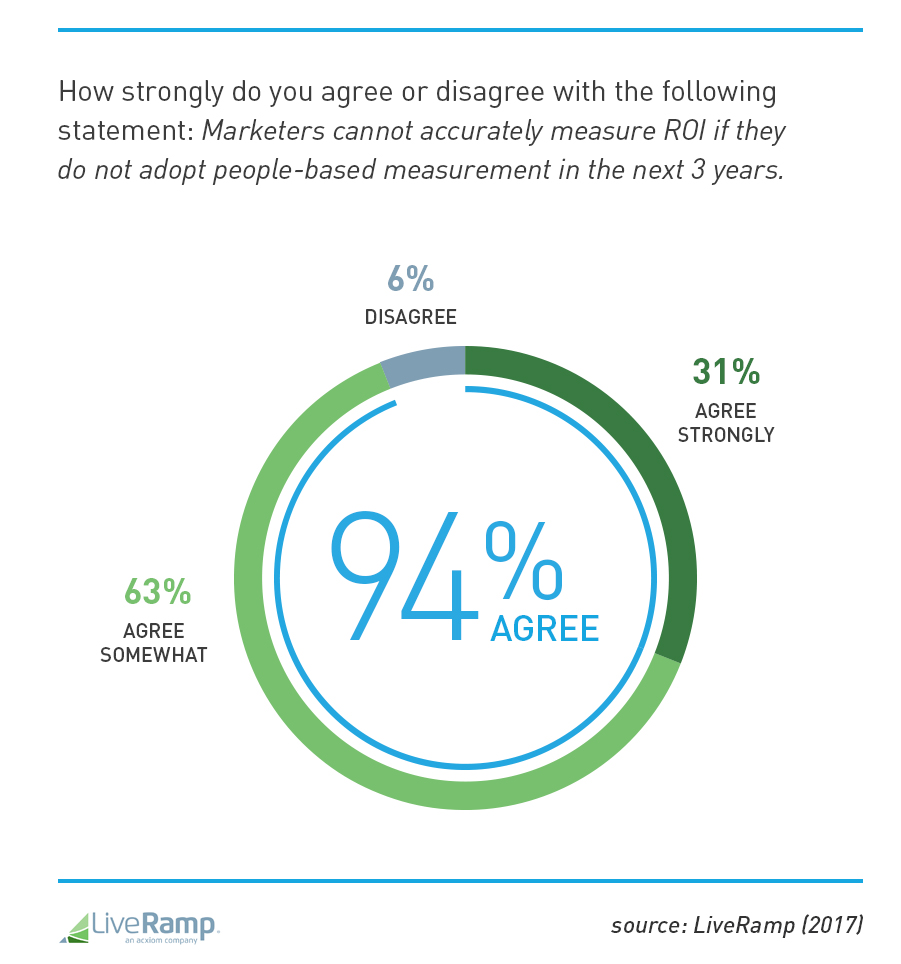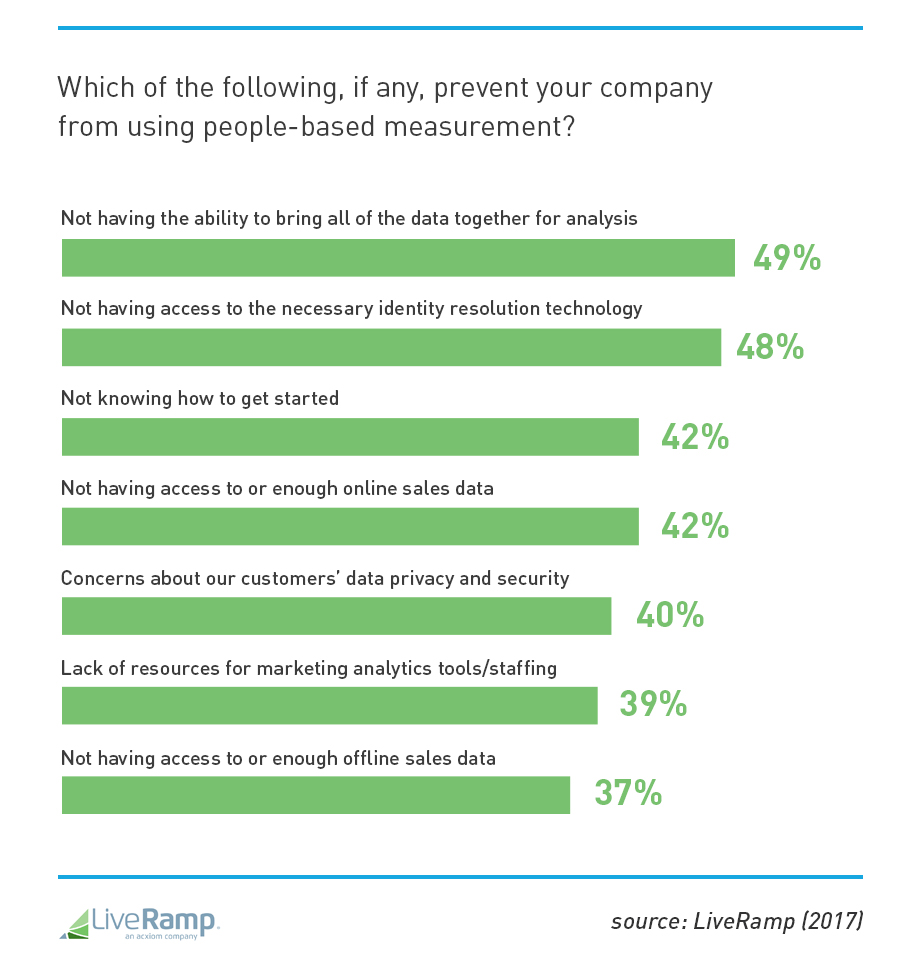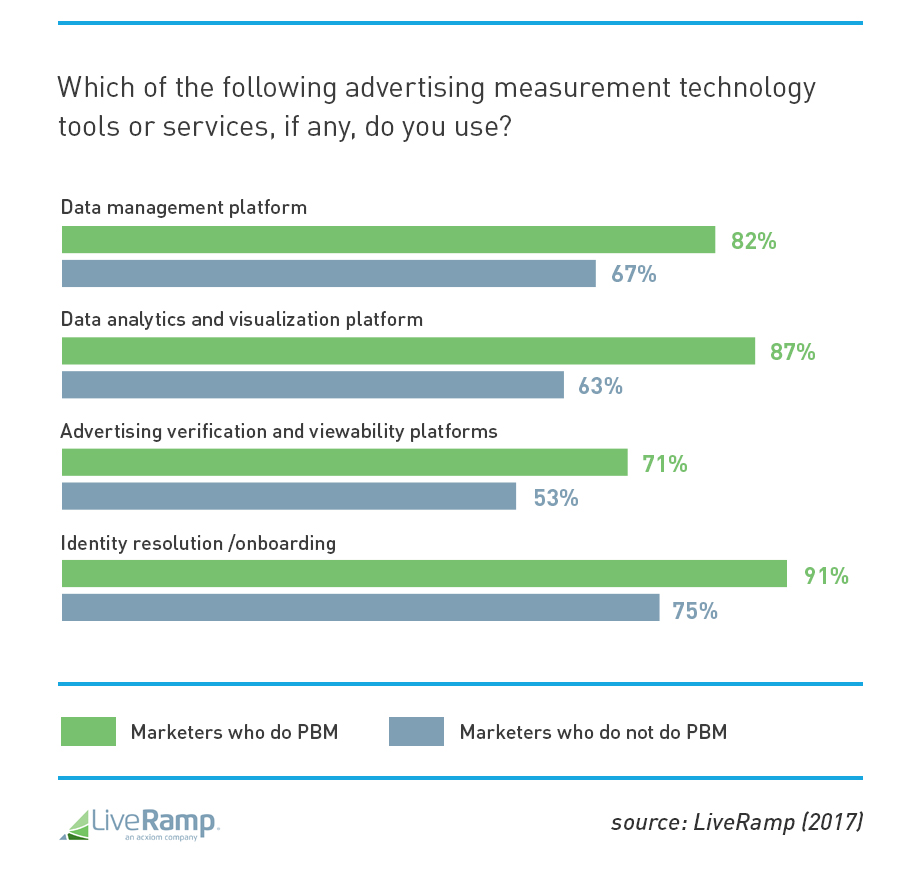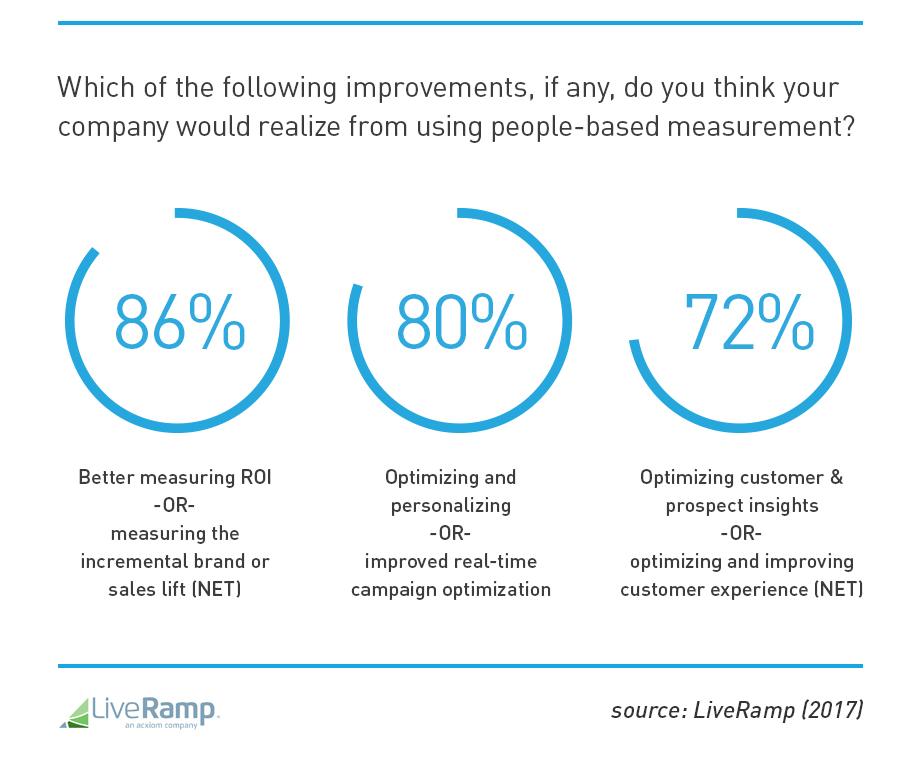
5 charts that show how people-based measurement can help your customers and company
In today’s omnichannel world, consumers are targeted through an ever-growing number of platforms and channels with an ever-growing number of messages. But do marketers really know just who these consumers are? Do they understand their journey? Or are they only seeing them as a mass of statistics and data points without any essential connecting threads?
As these five charts show, people-based measurement, or, PBM — defined as the use of de-duplicated, cross-channel person level data to measure the impact of marketing — can help a marketer enormously when it comes to making connections between customers and campaigns.
It’s essential for measuring ROI
500 marketing professionals were asked for their thoughts on how people-based measurement can help to accurately measure their marketing’s impact on sales. Of those surveyed, a whopping 94% agreed that marketers cannot accurately measure ROI if they do not adopt people-based measurement in the next 3 years.
Ad position: web_incontent_pos1
Three-quarters of the marketers also agreed that people-based measurement can aid in improved real-time campaign optimization, leading to a better outcome for both your business and your customers.

However, it’s not without its challenges
While an overwhelming number of marketers are on board with the idea of people-based measurement, eight out of 10 marketers surveyed have yet to implement these strategies, citing a number of common challenges.
There are various reasons why marketers might be hesitant about PBM. 49% cited not having the ability to bring all the data together for analysis, while 48% did not have access to the necessary Identity Resolution technology that helps enable this unified customer view.
Ad position: web_incontent_pos2
As 42% of marketers point out, it can be daunting to delve headfirst into a new capability, noting that they simply do not know how to get started — but the improved customer experience that results from people-based measurement can make this challenge well worth it.

This is the difference that PBM makes when it comes to metric measurement
If you’re implementing people-based measurement, you’re more likely to be measuring all other metrics in general. Of these 500 surveyed marketers, the ones who already use people-based measurement tactics are conducting deeper analysis than those who do not implement these capabilities.
It’s striking to note that 90% of those who use people-based measurement are comfortable attributing sales directly to online advertising — a huge boon when working in the digital marketing landscape.
 People-based measurement plays well with ad tech and mar tech tools
People-based measurement plays well with ad tech and mar tech tools
If your business has already invested in ad tech and mar tech tools, then it’s likely that you’re ready to take the next step toward better metrics. 87% of those marketers who use people-based measurement are also using data analytics and visualization platforms, showing a focus on results-driven campaigns.
The usage of these tools goes hand-in-hand with the usage of people-based measurement capabilities. Smart marketers are willing to invest their energy into pursuing the most fruitful ways of gaining results, from technology to customer insight.

In the end, people-based measurement is the gift that keeps on giving
As these charts all illustrate, it’s no secret that people-based measurement can help enormously with gaining deeper insight into overall marketing performance. However, calculating the success of a campaign or channel is only the start.
Additional benefits of people-based measurement include improved personalization and real-time optimization, as well as heightened customer and prospect insights, all of which can help improve the overall customer experience.

Check out the Liveramp study here if you’re interested in learning more.
More from Digiday
Sliders test article
Amazon bulldozes into new markets, upending the status quo and challenging rivals. Today, it’s the turn of the ad-supported streaming world, and Amazon is coming out of the gate strong. Why, you ask? Because Amazon is serving marketers an opportunity beginning today to reach a whopping 115 million monthly viewers in the U.S. alone, courtesy […]

How CTV and DOOH are growing this political season for smaller agencies
Connected TV and digital out-of-home are playing a bigger role in upcoming elections and politics – especially for smaller agencies looking to place clients’ dollars.

CMO Strategies: Advertisers identify the top attributes on ad-supported streaming platforms
This is the third installment in Digiday’s multi-part series covering the top ad-supported streaming services and part of Digiday’s CMO Strategies series. In this report, we examine which ad attributes matter the most to marketers on streaming platforms.
Ad position: web_bfu